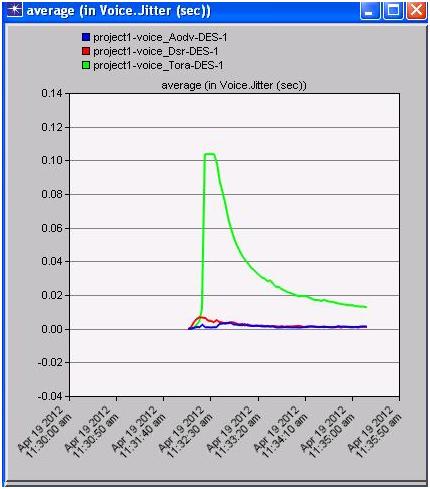Introduction to Jitter Data Communication:
In general jitter can be defined as the variation in time for the packet arrival due to congestion over the voice over IP networks. This variation should be low enough for a better quality of service across the voice application and this value is compared for the three scenarios like AODV, DSR and TORA and the resultant graph is as shown below
It can be observed from the above graph the average jitter is more across the hybrid routing protocol like TORA and it is minimum with the case of AODV routing protocol. It can be evaluated that due to the complex nature of hybrid routing protocols and high routing process implemented across the TORA the overall jitter value has increased.
It can also be observed that jitter value has increased a lot at the initial stages of simulation for TORA routing protocol and later it was reduced due to the proactive nature of the protocol. When the case with AODV and DSR are considered the overall jitter value is constant and low enough when compared to TORA. When the three routing protocols are considered the overall jitter value is less with AODV routing protocol.
From this analysis it is clear that, to improve the quality of service across the voice applications AODV routing protocol is suggestible.

